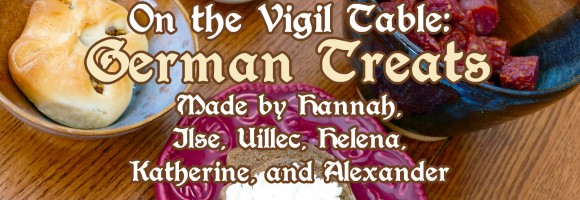
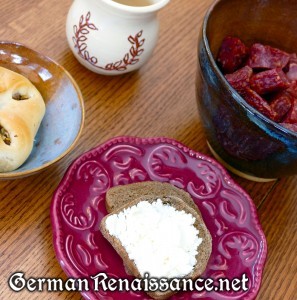 At my vigil* this weekend, we were all treated to a table full of delicious German foods prepared by my good friends Hannah, Ilse, Uillec, Helena, and Katherine. It was such a delightful culinary experience that I feel it deserves a post all of its own. And perhaps this will inspire those of you to laden your own table with Germanic treats. First, I present the menu for reference:
At my vigil* this weekend, we were all treated to a table full of delicious German foods prepared by my good friends Hannah, Ilse, Uillec, Helena, and Katherine. It was such a delightful culinary experience that I feel it deserves a post all of its own. And perhaps this will inspire those of you to laden your own table with Germanic treats. First, I present the menu for reference:
Vigil Menu of German Treats:
Bierocks (meat pies with cabbage)
Schinkenröllchen mit spargelr (ham-wrapped asparagus)
Zwiebelkuchen (onion and bacon tart)
Weisswurst and Landjäger (sausages) with homemade mustard
Gefüllte Eier (Deviled Eggs)
Käse Pfålzer Art (a cheese plate — with homemade soft cheese with tomato, onion, hard cooked eggs arranged on a plate.)
Sauerkraut Balls
Preztels and Ale Cheese Dip (made by my son Alexander)
Rye and Pumpernickel Breads
Lebkucken (German ginger snap cookie in a heart shape)
Linzer Herzen (Jam-filled butter cookies in a heart shape)
Erdbeerbowle (Strawberry wine punch)
The menu was developed using some modern recipes and the chefs made efforts to create and present them in as period form as possible focusing on the flavor of the dishes.
Two of these items deserve special mention for their authenticity, but first I have to share with you these drool-worthy photos I took of these treats:
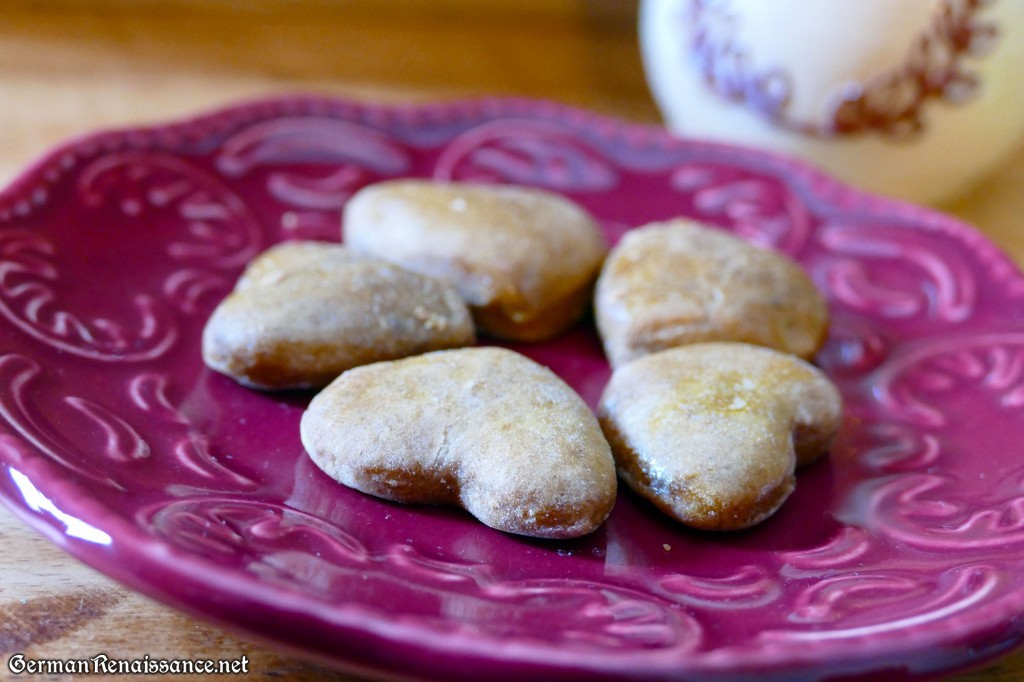 Lebkucken
Lebkucken
German ginger snap cookie in a heart shape
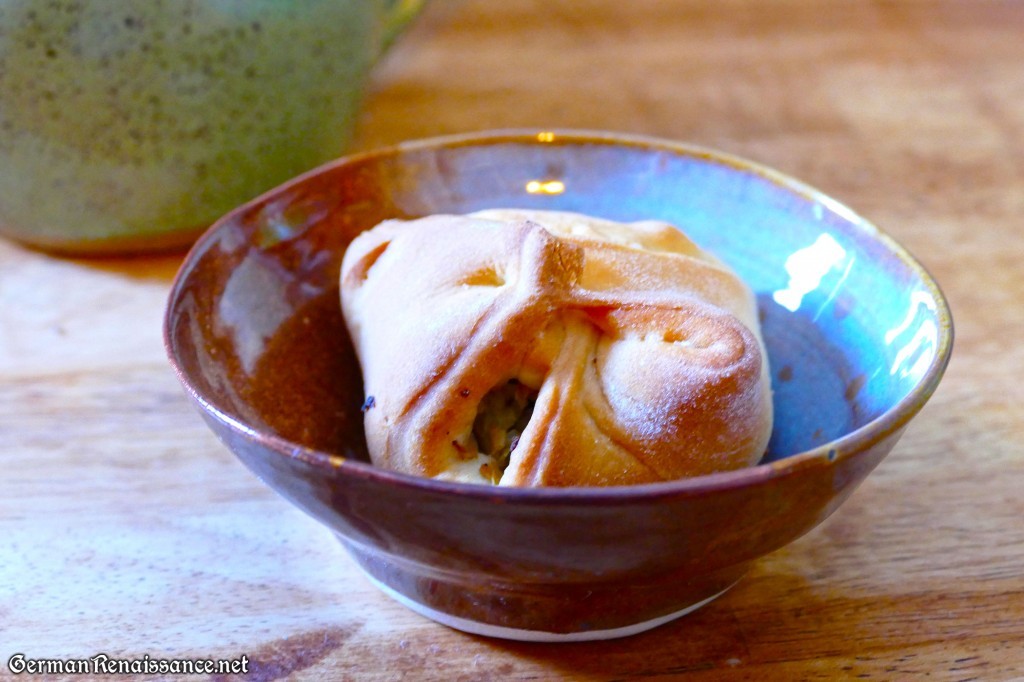 Bierocks
Bierocks
meat pies with cabbage
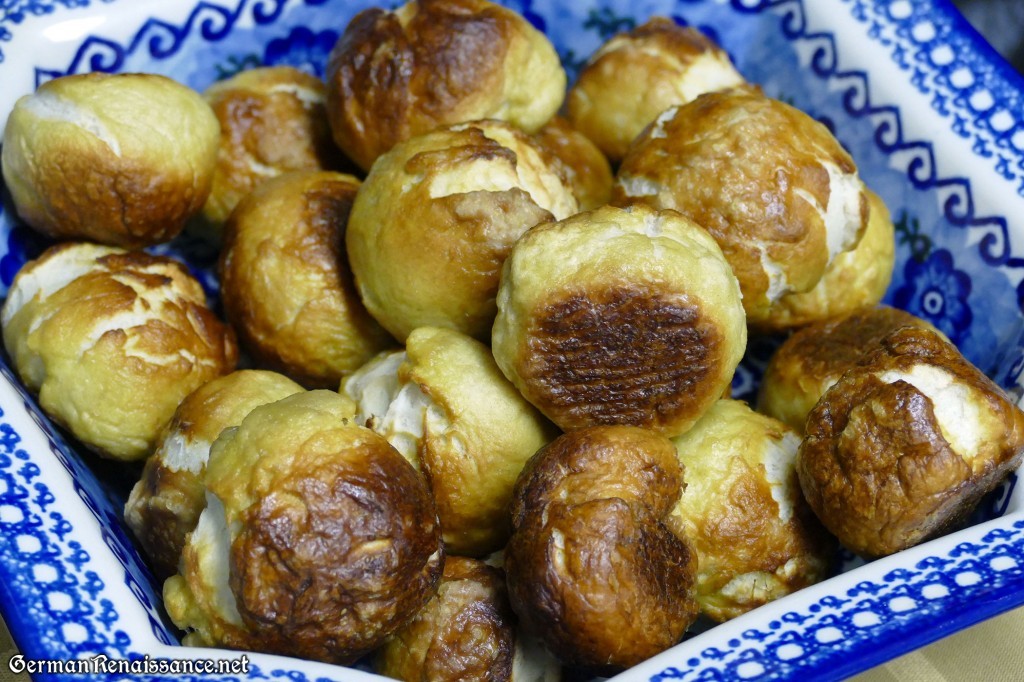 Brezel
Brezel
Pretzels made by my 11-year-old son
 Landjäger
Landjäger
This is a semi-dried sausage traditionally made in Southern Germany. It has a history as soldier’s food because it keeps without refrigeration.
 Gefüllte Eier
Gefüllte Eier
Deviled Eggs
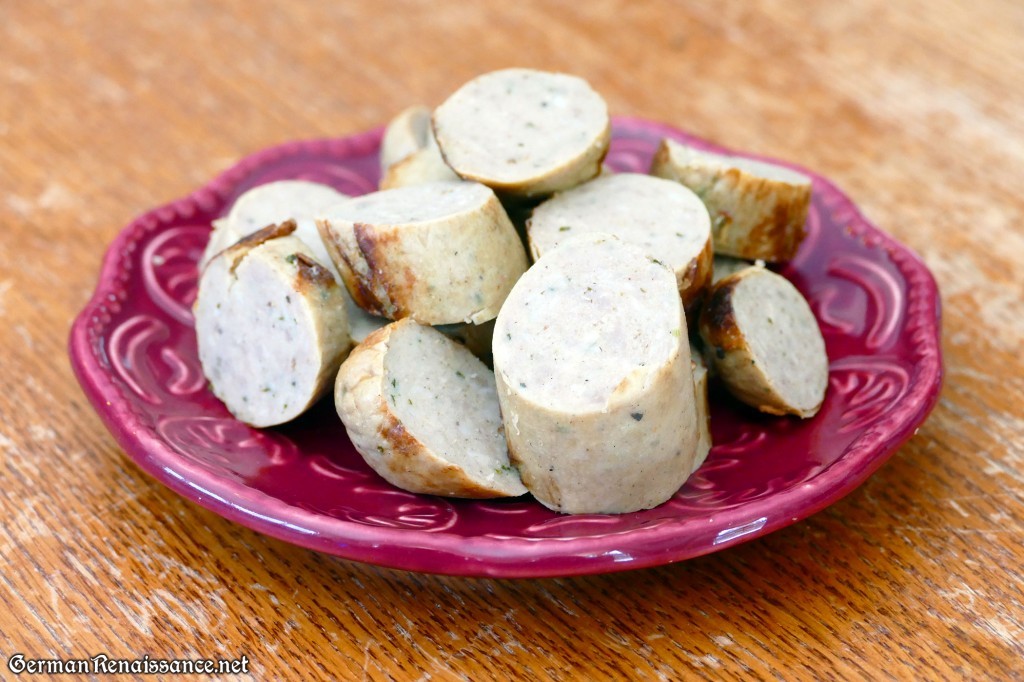 Weisswurst
Weisswurst
a traditional Bavarian sausage made from minced veal and pork back bacon, and flavoured with parsley, lemon, mace, onions, ginger, and cardamom
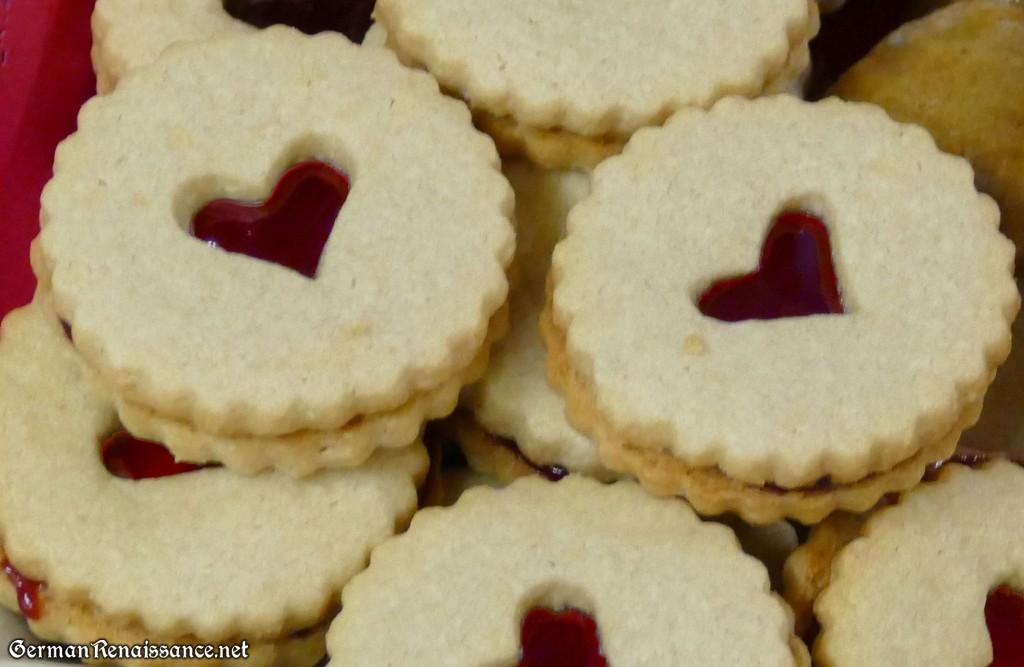 Linzer Herzen
Linzer Herzen
Jam-Filled butter cookies
 Erdbeerbowle
Erdbeerbowle
Strawberry wine punch (Ours was non-alcoholic)
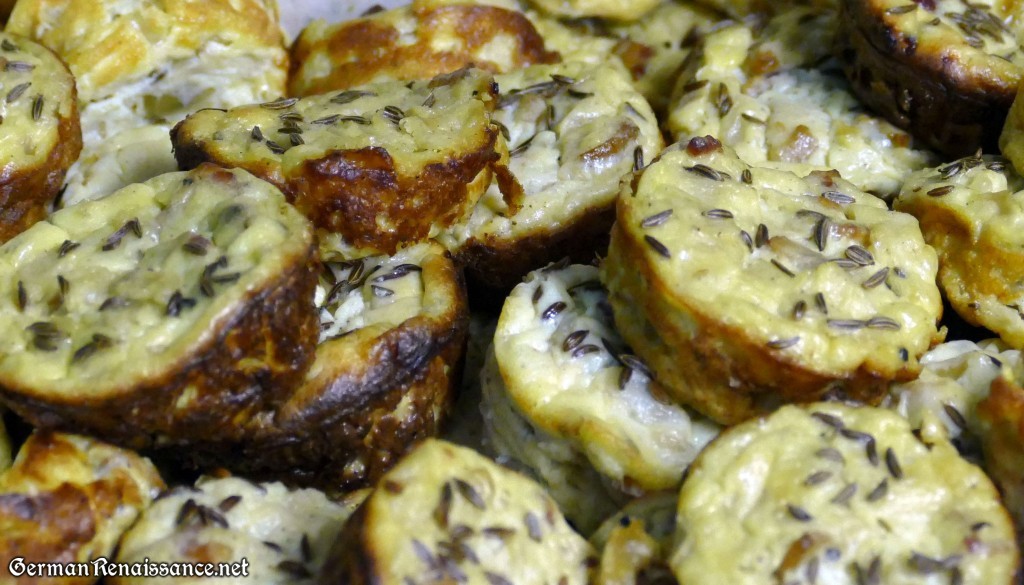 Zwiebelkuchen
Zwiebelkuchen
Onion and Bacon Tart
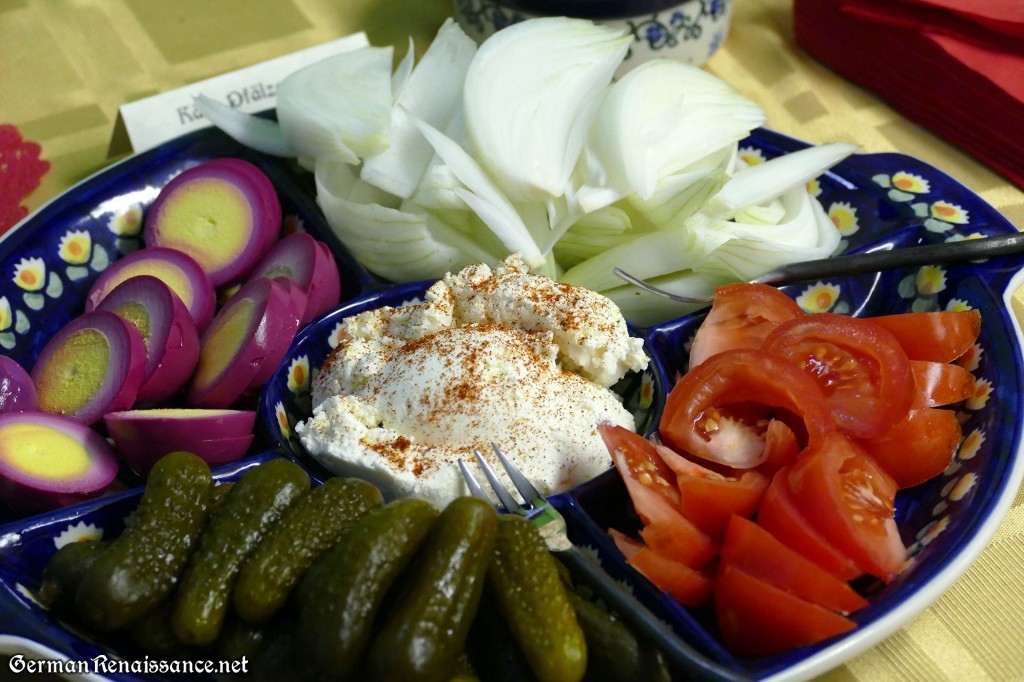 Käse Pfålzer
Käse Pfålzer
Soft cheese, pickled eggs, onions, tomatoes, and pickles
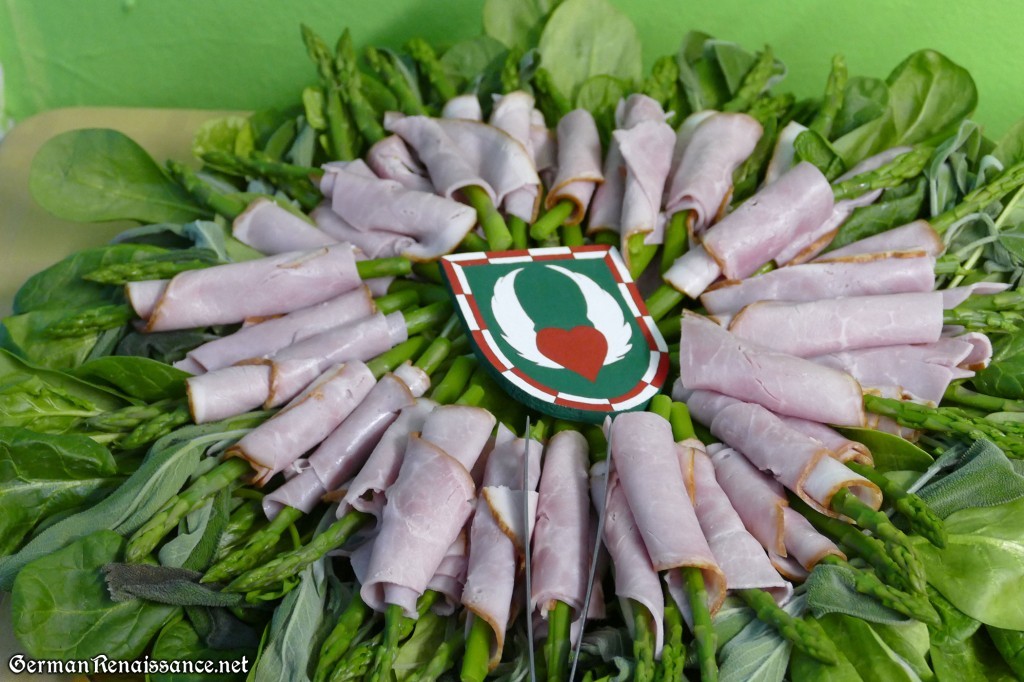 Schinkenrollchen mit spargelr
Schinkenrollchen mit spargelr
Ham-wrapped asparagus — note the garnish arranged like a laurel wreath
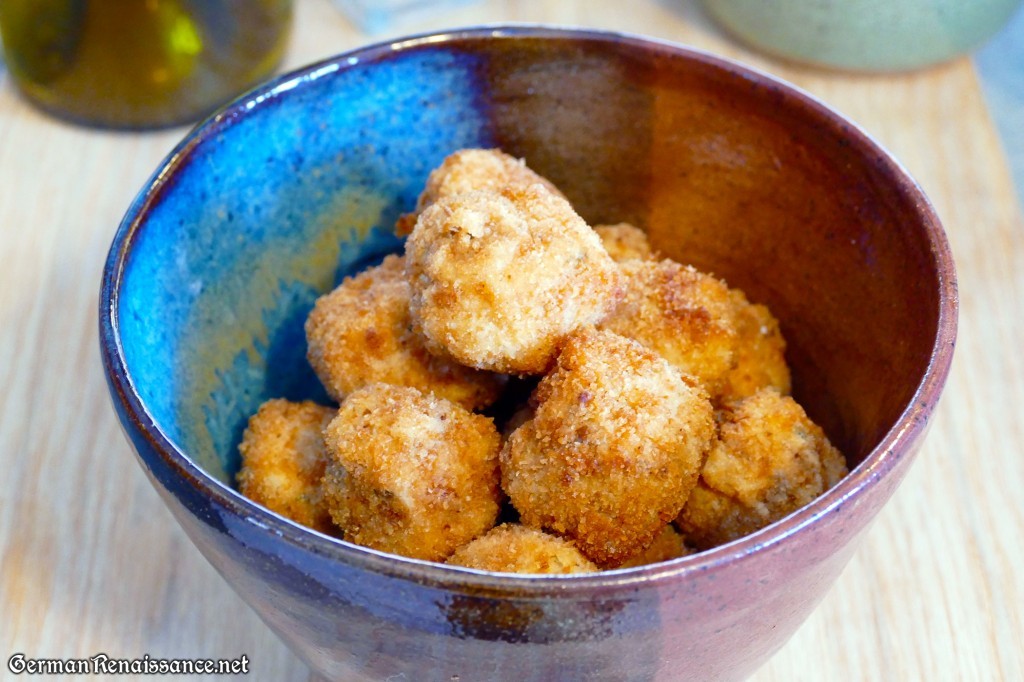 Saurkraut balls
Saurkraut balls
(These were the most popular item all day!)
The fresh cheese deserves special mention. Baroness Hannah Schrieber has been making this fresh, soft cheese for a number of years now. And as it turns out, I likely had her cheese the first time she ever made it at my very first SCA event nearly five years ago (Half-Century Holiday). She’s been perfecting it since then and will be entering it in the Pentamere Regional Arts & Sciences Competition next month (April 2016). Fresh cheese has been made and served for thousands of years, dating back to at least the Greek times (see Xenophon’s writings). A fresh cheese very much like this was described by Tacitus in his book Germania—he called it lac concretum (“thick milk”). Whatever it is, it’s utterly creamy and delicious—just look at that texture:
Here’s a simple description of how Hannah told me she and Ilse made the cheese—for more information, see Hannah’s documentation at the Regional A&S competition (which will eventually appear on her upcoming blog).
Hannah’s Fresh Cheese Recipe
- Pour a gallon of milk and a quart of heavy cream into a large, sterilized pot.
- Heat the milk until a slight steam rises from the surface (180-195-degrees). Do not let it boil.
- Once steaming, turn the heat to low and add in your curdling agent slowly while stirring. (Hannah used the juice of three lemons and three tablespoons of grated lemon peel as she prefers the flavor, but a half cup of vinegar would be more historically accurate).
- Once you see the milk proteins begin to curdle and clump together (become “whey”), strain the mixture in cheesecloth to separate the curds (clumps) from the whey (liquid).
- Pull up the cheesecloth by each corner and tie it into a small bag, then hang this bag over a container of some kind to catch the whey liquid. The less it drains, the moister it remains, so simply stop hanging when it gets to the consistency you prefer. Hannah prefers to let it drain two hours.
- Scrape the curds inside the cheesecloth into a container you can seal and add a bit of salt.
- Enjoy by spreading the cheese however you like, or put it in a cool place overnight to let it mature a bit more.
It’s good flavored with some herbs and garlic powder if you get tired of it plain. But plain is good, too! It should last about two weeks in the refrigerator, and softens at room temperature. It will get less and less creamy over time,” says Hannah.
Another item of note on the vigil table was the homemade mustard prepared by Baroness Hannah. She entered her mustards—as well as her research on mustards—twice in the Kingdom Arts & Sciences Competition, receiving a first place both times. I cannot personally comment on her mustard (not being a fan of mustards), but I can attest to her documentation. She’s allowed me to share both sets of documentation with you here, and I encourage you to read it if you have an interest in historical cooking, or are simply a connoisseur of real mustard:
I was gifted with what remained of the treats, and we’ve been nibbling on them ever since. I can attest to the fact that they are just as delicious!
Many, many thanks to Baroness Hannah Schrieber, Lady Ilse Strauss, Lord Uillec MacLamont, Mistress Helena Sibylla, The Honorable Lady Katherine Hatton Rames, and Alexander von Lübeck for everything they did to create this delight of the senses. I know my vigil visitors enjoyed these treats as well, not only from their comments but also because someone was always at the table whenever I got a glimpse of the outside! I also heard, from behind the stout, wooden door to my vigil chamber, folks calling for “sauerkraut balls” several times!
* I don’t believe I’ve mentioned it on this blog yet, but I was placed on vigil to join the Order of the Laurel in January 2016. Read the story here.
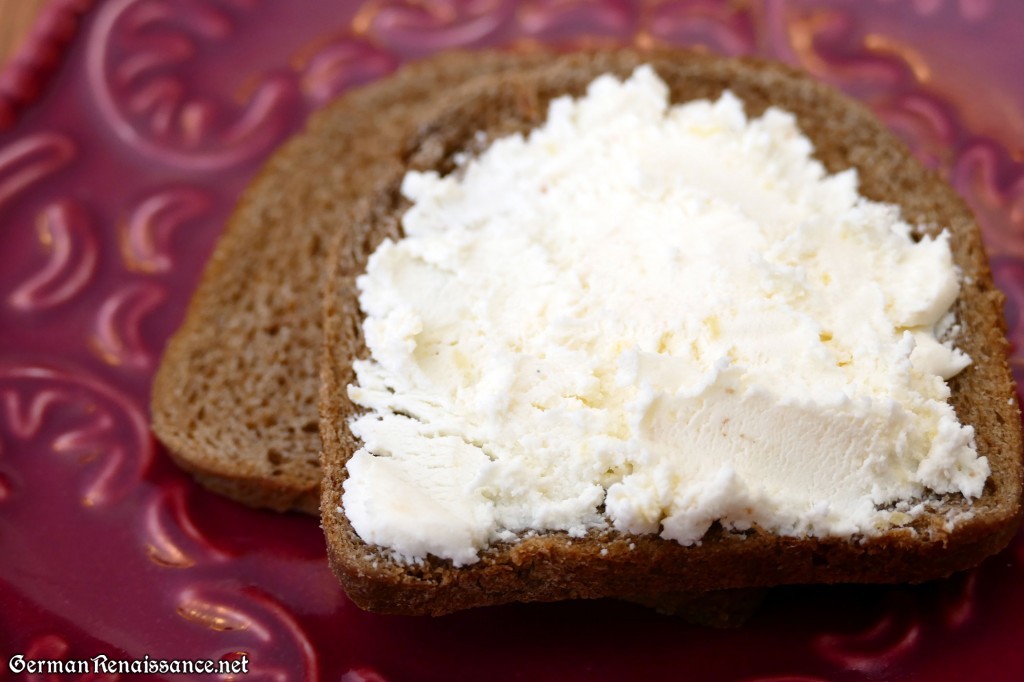


I wish that you were closer to me! I would love to partake such a wonderful meal as this, with you all! It looks like you had a great time.
Thank you for Sharing!
Lady Cate